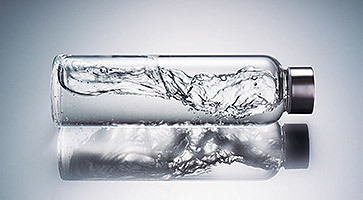language
English
العربية
বাংলাদেশ
Български
Hrvatski
Česky
Dansk
Nederland
Esperanto
Slovenski
filipino
Suomi
Français
Maori
Georgian
Deutsch
Ελλάδα
ישראל
इंडिया
Magyarország
Ísland
Indonesia
Irlanda
Italia
日本語
Sovensko
Հայաստան
한국
Kyrgyz
ປະເທດລາວ
Latvian
Lithuanian
Luxembourgish
Macedonian
Малайская
Maltese
Монгол улс
ဗမာ
नेपाल
Norge
ایران
Polska
Portugal
România
Российская
Србија
Србија
Bosanski
Slovenian
Беларус
España
Sverige
Точик
ประเทศไทย
Türk
Azərbaycan
Uzbek
Việt Nam
NEWS / Jinghua Glasswork
From Glass Figurines to Animal Sculptures: A World of Artistic Possibilities from China
Categories:
Time of issue:
Jun 05,2023
Introduction
Chinese art has a rich history that spans thousands of years, and it continues to captivate audiences worldwide with its beauty and diversity. From intricate glass figurines to stunning animal sculptures, these masterpieces reflect the cultural and artistic traditions of China. In this article, we will explore the world of Chinese art, its history, and the different types of art forms
Introduction
Chinese art has a rich history that spans thousands of years, and it continues to captivate audiences worldwide with its beauty and diversity. From intricate glass figurines to stunning animal sculptures, these masterpieces reflect the cultural and artistic traditions of China. In this article, we will explore the world of Chinese art, its history, and the different types of art forms that have emerged from this fascinating culture.
History of Chinese Art
Chinese art has a long and rich history that dates back to the Neolithic period. During this time, pottery and jade carvings were the most common forms of art. As civilization progressed, the art form evolved into bronze casting, painting, calligraphy, and silk embroidery. Each era saw new techniques, styles, and materials emerge, reflecting the changing social, political, and cultural landscape of China.
Types of Chinese Art
There are various types of Chinese art, each with its unique style and cultural significance. Some of the most popular forms of Chinese art include:
1. Glass figurines - These intricately crafted figurines are made by skilled artisans who use glassblowing techniques to create delicate and intricate designs. The figurines depict everything from mythical creatures to everyday objects, and they are a testament to the incredible skill and creativity of Chinese artists.
2. Animal sculptures - Chinese artists have long been fascinated by animals, and this is reflected in their sculptures. From the majestic dragon to the playful panda, animal sculptures capture the spirit and personality of these creatures in a way that is both beautiful and expressive.
3. Calligraphy - Calligraphy is the art of writing characters using a brush, and it is a highly respected art form in China. Chinese calligraphy is known for its beauty, elegance, and precision, and it is often used to convey philosophical or spiritual messages.
4. Painting - Chinese painting is a traditional art form that dates back thousands of years. It is characterized by its use of watercolors, ink, and brushwork to create images that are both vivid and expressive.
5. Silk embroidery - Embroidery is an ancient art form that has been practiced in China for thousands of years. Silk embroidery is particularly prized for its intricate designs, vivid colors, and delicate textures.
Expert Insights
Chinese art is a complex and diverse field, and it can be challenging to understand the cultural and historical significance of different art forms. To help you gain a better understanding of Chinese art, we have gathered insights from experts in the field:
- "Chinese art has a rich and varied history, and each art form reflects the changing cultural and political landscape of China. From the Neolithic period to the present day, Chinese artists have created masterpieces that capture the spirit and essence of this fascinating culture." - Dr. Li Wei, Professor of Art History, Peking University.
- "Chinese art is defined by its complexity, diversity, and cultural significance. Whether you are looking at glass figurines or animal sculptures, each piece tells a story and reflects the unique perspective of the artist who created it." - Dr. Chen Xiaoxi, Director, National Museum of China.
FAQs
1. What is the cultural significance of Chinese art?
Chinese art reflects the history, culture, and traditions of China. It is a means of expressing philosophical, spiritual, and political ideas through visual images and symbols.
2. How does Chinese art differ from Western art?
Chinese art is characterized by its use of symbolism, calligraphy, and brushwork, while Western art is often more focused on realism and naturalism.
3. What are the most popular types of Chinese art?
Some of the most popular types of Chinese art include glass figurines, animal sculptures, calligraphy, painting, and silk embroidery.
4. What is the significance of animal sculptures in Chinese art?
Animal sculptures have long been a popular art form in China, and they are often used to symbolize different qualities or virtues, such as strength, wisdom, or playfulness.
5. How has Chinese art evolved over time?
Chinese art has evolved over thousands of years, reflecting the changing social, political, and cultural landscape of China. New techniques, styles, and materials have emerged over the centuries, reflecting the creativity and innovation of Chinese artists.
Conclusion
Chinese art is a complex and diverse field that reflects the rich cultural and artistic traditions of China. Whether you are looking at glass figurines, animal sculptures, calligraphy, painting, or silk embroidery, each piece tells a unique story and reflects the creativity and skill of Chinese artists. We hope this article has provided you with a better understanding of Chinese art and its significance in the cultural landscape of China.
Chinese art has a rich history that spans thousands of years, and it continues to captivate audiences worldwide with its beauty and diversity. From intricate glass figurines to stunning animal sculptures, these masterpieces reflect the cultural and artistic traditions of China. In this article, we will explore the world of Chinese art, its history, and the different types of art forms that have emerged from this fascinating culture.
History of Chinese Art
Chinese art has a long and rich history that dates back to the Neolithic period. During this time, pottery and jade carvings were the most common forms of art. As civilization progressed, the art form evolved into bronze casting, painting, calligraphy, and silk embroidery. Each era saw new techniques, styles, and materials emerge, reflecting the changing social, political, and cultural landscape of China.
Types of Chinese Art
There are various types of Chinese art, each with its unique style and cultural significance. Some of the most popular forms of Chinese art include:
1. Glass figurines - These intricately crafted figurines are made by skilled artisans who use glassblowing techniques to create delicate and intricate designs. The figurines depict everything from mythical creatures to everyday objects, and they are a testament to the incredible skill and creativity of Chinese artists.
2. Animal sculptures - Chinese artists have long been fascinated by animals, and this is reflected in their sculptures. From the majestic dragon to the playful panda, animal sculptures capture the spirit and personality of these creatures in a way that is both beautiful and expressive.
3. Calligraphy - Calligraphy is the art of writing characters using a brush, and it is a highly respected art form in China. Chinese calligraphy is known for its beauty, elegance, and precision, and it is often used to convey philosophical or spiritual messages.
4. Painting - Chinese painting is a traditional art form that dates back thousands of years. It is characterized by its use of watercolors, ink, and brushwork to create images that are both vivid and expressive.
5. Silk embroidery - Embroidery is an ancient art form that has been practiced in China for thousands of years. Silk embroidery is particularly prized for its intricate designs, vivid colors, and delicate textures.
Expert Insights
Chinese art is a complex and diverse field, and it can be challenging to understand the cultural and historical significance of different art forms. To help you gain a better understanding of Chinese art, we have gathered insights from experts in the field:
- "Chinese art has a rich and varied history, and each art form reflects the changing cultural and political landscape of China. From the Neolithic period to the present day, Chinese artists have created masterpieces that capture the spirit and essence of this fascinating culture." - Dr. Li Wei, Professor of Art History, Peking University.
- "Chinese art is defined by its complexity, diversity, and cultural significance. Whether you are looking at glass figurines or animal sculptures, each piece tells a story and reflects the unique perspective of the artist who created it." - Dr. Chen Xiaoxi, Director, National Museum of China.
FAQs
1. What is the cultural significance of Chinese art?
Chinese art reflects the history, culture, and traditions of China. It is a means of expressing philosophical, spiritual, and political ideas through visual images and symbols.
2. How does Chinese art differ from Western art?
Chinese art is characterized by its use of symbolism, calligraphy, and brushwork, while Western art is often more focused on realism and naturalism.
3. What are the most popular types of Chinese art?
Some of the most popular types of Chinese art include glass figurines, animal sculptures, calligraphy, painting, and silk embroidery.
4. What is the significance of animal sculptures in Chinese art?
Animal sculptures have long been a popular art form in China, and they are often used to symbolize different qualities or virtues, such as strength, wisdom, or playfulness.
5. How has Chinese art evolved over time?
Chinese art has evolved over thousands of years, reflecting the changing social, political, and cultural landscape of China. New techniques, styles, and materials have emerged over the centuries, reflecting the creativity and innovation of Chinese artists.
Conclusion
Chinese art is a complex and diverse field that reflects the rich cultural and artistic traditions of China. Whether you are looking at glass figurines, animal sculptures, calligraphy, painting, or silk embroidery, each piece tells a unique story and reflects the creativity and skill of Chinese artists. We hope this article has provided you with a better understanding of Chinese art and its significance in the cultural landscape of China.
Keyword:
creative glass from China
Relevant information
Aug 07,2023
The Benefits of Screw Glass Water Bottles for Everyday Use
Introduction:
Screw glass water bottles have become increasingly popular among enthusiasts of everyday items, especially those with an interest in sustainable and eco-friendly products. This article sheds light on the benefits of incorporating screw glass water bottles into your daily routine, highlighting their practicality and unique features.
1. Durability and Safety:
Screw glass water bottles
Aug 07,2023
The Benefits of Using a Screw Glass Water Bottle for Your Daily Water Intake
Table of Contents:
1. Introduction: A Sustainable Solution for Hydration
2. Why Choose a Screw Glass Water Bottle?
3. Enhanced Taste for a Refreshing Experience
4. Durability and Longevity: A Wise Investment
5. Eco-Friendly Features: Contributing to a Greener Planet
6. Protection from Harmful Chemicals: Safe for Daily Use
7. Convenience and Portability: Stay Hydrated Anywhere, Anytime
8. Easy Main
Aug 06,2023
The Benefits of Screw Glass Water Bottles for Everyday Use
Introduction:
Screw glass water bottles have become increasingly popular in recent years as a sustainable and stylish alternative to plastic bottles. In this article, we will explore the numerous benefits of using screw glass water bottles for everyday use. From their durability and eco-friendliness to their ability to maintain the taste and temperature of your beverages, these bottles offer a ran












